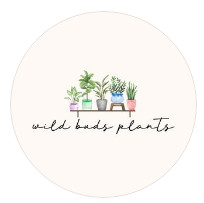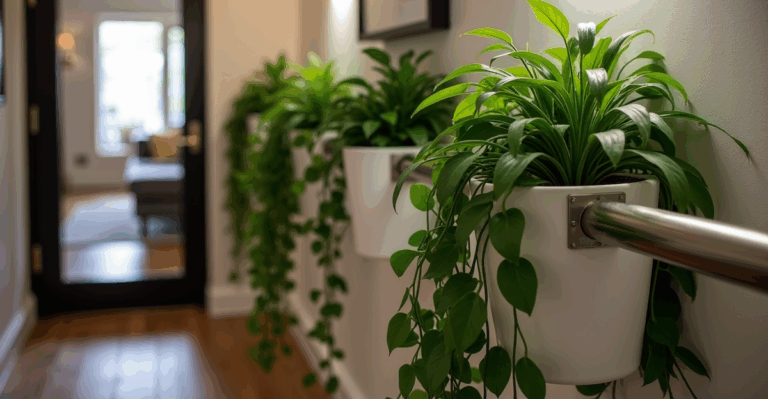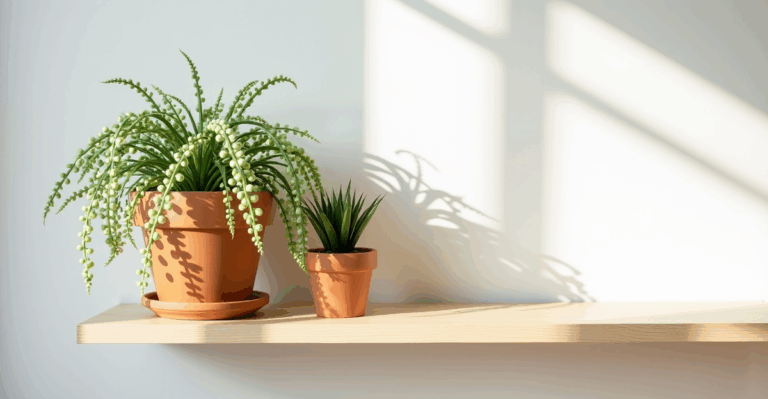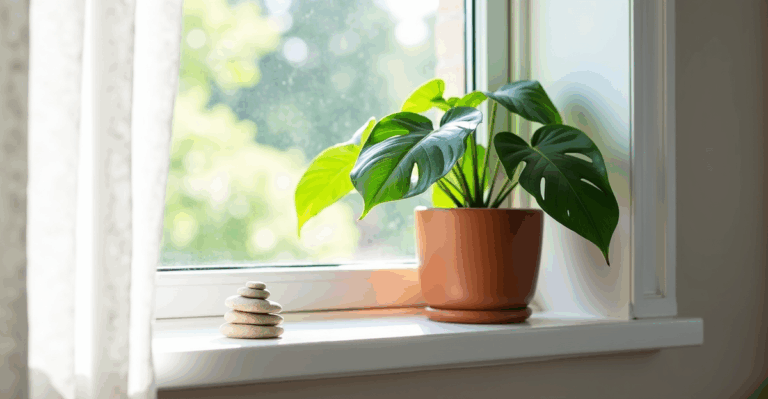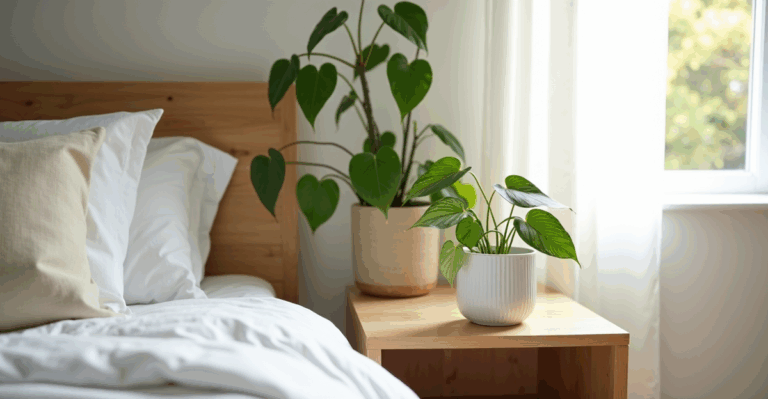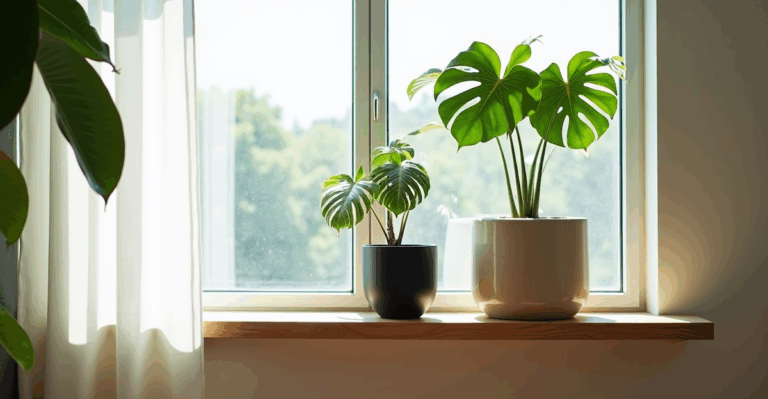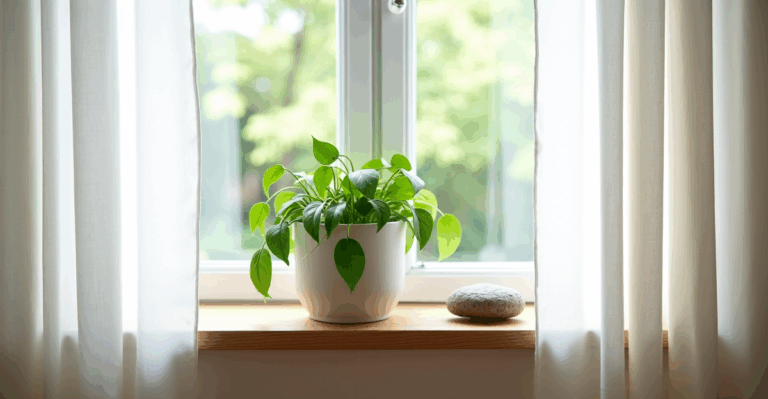The Best Philodendrons for Your Bedroom (and Why Self-Watering *Actually* Works Here)
You’ve finally nailed the bedroom vibe: soft lighting, a calming color palette, maybe a few well-placed plants that feel like part of the space, not just décor. Then you notice the Heartleaf philodendron you bought at the corner store is looking a bit droopy, its leaves yellowing at the edges. You water it, but it just gets worse. Sound familiar? That’s the classic bedroom plant struggle: low light, inconsistent watering, and the quiet stress of a space that’s meant to be restful but ends up being a plant-care headache. It’s not that you’re failing—it’s that most advice treats your bedroom like a sun-drenched living room. Let’s fix that.
The Bedroom Reality Check
Bedrooms rarely have that perfect, bright, east-facing window ideal for most plants. They often have north-facing windows (low light), south-facing windows with harsh afternoon sun (scorch risk), or just a single window with filtered light. Humidity can be low in winter (from heating) or high in summer (from showers), and you’re likely less attentive to watering when you’re winding down for bed. The key isn’t forcing a plant that wants direct sun into your bedroom—it’s finding the philos that thrive in that specific, quieter environment. They also shouldn’t be messy (like large, climbing varieties needing heavy support), and they must tolerate the gentle, consistent airflow of a bedroom, not a drafty hallway.
The Philodendron Advantage
Philodendrons are champions for this. They’re forgiving, adapt well to lower light, and their lush leaves add instant life without overwhelming the space. But not all are equal for a bedroom. We’ve tested dozens, and these four consistently hit the sweet spot—low-light tolerant, slow-growing (so they don’t outgrow your shelf), and beautifully styled with minimal fuss.
1. Heartleaf Philodendron (Philodendron hederaceum)
Why it’s perfect for bedrooms: This is the gentle giant of the philo world. It tolerates low light (think north window or a few feet from a west window) and grows slowly, so you won’t need to repot it every few months. Its heart-shaped leaves and trailing habit make it ideal for floating on a bedside table, hanging from a ceiling hook, or cascading off a bookshelf—no moss pole needed. It’s also incredibly resilient to occasional missed waterings (a common bedroom oversight).
What most miss: It does need bright, indirect light to keep leaves vibrant and prevent leggy growth. A north window might keep it alive, but it’ll get sparse. If your only window is south-facing, place it 3–4 feet back from the glass on a shelf or on a higher surface where the light is diffused.
Real bedroom scenario: My north-facing bedroom has dry winter air from the radiator. I put my Heartleaf on a shelf 2 feet away from the window, on a small wooden riser to lift it out of the cold air near the floor. I water only when the top 2–3 inches of soil feel dry (usually every 10–14 days in winter), and it’s been thriving for 2 years.
Edge cases: Avoid overwatering in low light—this is the #1 killer. If leaves turn yellow and soft, you’re watering too often. Let it dry out more. It’s not a humidity hound, but it will perk up with a pebble tray if your air is very dry.
Implementation tip: Use a simple, unobtrusive pot (like a ceramic or clay) in a neutral tone. For a bedroom vibe, avoid shiny or metallic finishes—they feel too “room” and not “rest.” A small, textured planter that disappears into the decor is key.
2. Birkin Philodendron (Philodendron ‘Birkin’)
Why it’s perfect for bedrooms: This one’s a showstopper with its bold, variegated green-and-white leaves. It’s slightly less forgiving than Heartleaf but thrives in the consistent, medium-low light most bedrooms offer. It grows slowly (so it stays compact on a nightstand or dresser), and its upright, sculptural form adds a modern touch without being loud. It’s a conversation starter that belongs in your bedroom sanctuary.
What most miss: Birkin needs more consistent light than Heartleaf. It will lose its variegation (turning all green) in very low light, which makes it look sad and less vibrant. It also craves slightly higher humidity than Heartleaf—common in bedrooms after showers, but not always ideal in dry winter months.
Real bedroom scenario: My bedroom has a west window, but I have a sheer curtain that diffuses the afternoon sun. I keep my Birkin on a high bookshelf (not on the floor) where it gets gentle, filtered light all day. I mist the leaves once a week with a spray bottle (not a humidifier) and let the soil dry out slightly more between waterings than Heartleaf. It’s been healthy for 18 months.
Edge cases: It’s sensitive to over-fertilizing—too much causes leaf burn. Stick to half-strength liquid fertilizer once a month in spring/summer only. Watch for spider mites (tiny webs on leaf undersides) if humidity is very low.
Implementation tip: Pair it with a sleek, modern pot that complements its clean lines. A matte black or deep charcoal planter feels intentional, not decorative. Avoid overly large pots—it looks top-heavy on a small surface.
3. Brasil Philodendron (Philodendron hederaceum ‘Brasil’)
Why it’s perfect for bedrooms: This is the most forgiving of the variegated philos. It grows faster than Birkin but slower than Heartleaf, and it’s tough as nails in medium-low light. The striking yellow variegation is vibrant even in lower light, and it’s a great choice if you want a bit more visual pop without the fuss. Its trailing habit works beautifully on shelves or hanging.
What most miss: Brasil’s variegation does fade in very low light—it’s not just a myth. If you have a windowless north room, it’ll become mostly green. But it’s still healthy! The key is knowing that a little more light (even just from a nearby lamp for a few hours) will keep the color strong.
Real bedroom scenario: My bedroom has no natural light except for a small window that gets only morning sun. I placed my Brasil on a small side table right by the window, and I also keep a small LED grow light (12 hours/day on a timer) on a shelf below it. The light is low, but the grow light fills the gap, and the Brasil is thriving with bright, consistent color.
Edge cases: The variegated parts grow slower than the green parts, so it might look lopsided if one side gets more light. Rotate the pot every week. It’s prone to root rot if overwatered in low light—be extra careful to let the soil dry out fully.
Implementation tip: A woven rattan or natural fiber planter (like seagrass) adds warmth and texture, making it feel like part of your bedroom’s organic vibe. It’s also a great match for a small, self-watering planter (more on that below).
4. Micans Philodendron (Philodendron micans)
Why it’s perfect for bedrooms: This is the velvet-textured, low-maintenance dream. It loves medium-low, indirect light (perfect for most bedrooms), and its velvety, heart-shaped leaves add a touch of luxury without being flashy. It grows slowly, so it stays at a manageable size on your dresser or nightstand. It’s also less sensitive to humidity swings than many plants.
What most miss: Micans does need slightly more humidity than other philos—but bedrooms often provide enough from showers or a humidifier. The bigger risk is cold drafts from windows (especially in winter), which can cause leaf drop. Keep it away from open windows or AC vents.
Real bedroom scenario: My bedroom window faces east, so it gets gentle morning sun. I put my Micans on a small wooden shelf, a few feet from the window (to avoid direct sun scorch), and it’s been happy for 3 years. I water only when the top 1–2 inches of soil feel dry (about every 7–10 days), and I’ve never had to mist it.
Edge cases: It’s prone to root rot if the soil stays wet, so drainage is critical. Avoid cheap plastic pots that hold water. It also needs occasional wiping of leaves to remove dust (dust blocks light), but that’s a quick 2-minute task before bed.
Implementation tip: A small, sculptural pot (like a geometric ceramic) complements its texture beautifully. Avoid wide, shallow dishes—it makes the plant look unstable.
Why Self-Watering Works Best in the Bedroom
The biggest bedroom plant struggle isn’t light—it’s forgetting to water. We’ve all had that moment: “Did I water it last week?” Self-watering planters solve this without the risk of overwatering (if done right). They have a reservoir at the bottom, a wick or capillary system that draws water up as the plant needs it, and a top layer that dries out first. This means:
- You water once a month (not weekly)—perfect for busy mornings or when you’re traveling.
- No more soil saturation—because the top layer dries out, reducing root rot risk.
- Consistent moisture—crucial for slow-growing plants like these philos.
Real bedroom note: I use self-watering planters for all my bedroom plants. The first time I left on a weekend trip, I was worried. But my Heartleaf and Micans were perfectly fine when I got back. The soil stayed moist but not soggy.
Trade-off to know: They do require a pot with good drainage inside the self-watering system (like a standard pot that fits inside the reservoir). You also need to flush the reservoir with water every few months to prevent mineral buildup from tap water (just pour out the old water and refill with fresh).
Why Our 3D-Printed Planters Are the Bedroom Solution
We’ve spent years testing standard planters for bedrooms. The problem? Most are too heavy for hanging, too large for small surfaces, or have awkward shapes that clash with your decor. They also don’t let you see the water level in the reservoir, which is key for self-watering.
That’s why we designed our 3D-printed planters. They’re lightweight (so they won’t stress your shelf), perfectly sized for small bedroom plants (heartleaf, birkin, etc.), and feature a clear reservoir window so you can see when it’s time to refill. The matte finishes blend with your decor, and the shapes (like a subtle curve or geometric edge) feel intentional—like they belong on your nightstand, not just a plant.
They also solve the “too big for the shelf” problem: A standard self-watering pot might be 8″ wide, but our 3D design fits a 6″ pot with room to breathe. And the textured surface? It hides tiny water rings on your dresser without looking like a cheap plastic pot.
When you’re ready to grow your setup, explore our 3D-printed planters.
Key Takeaways
– Heartleaf and Micans are the most forgiving for low-light bedrooms; Birkin and Brasil need a bit more light but are worth it.
– Self-watering works best in bedrooms when paired with a pot that has good drainage inside the system.
– Always prioritize the light in your bedroom—don’t force a plant into a space it can’t thrive in.
